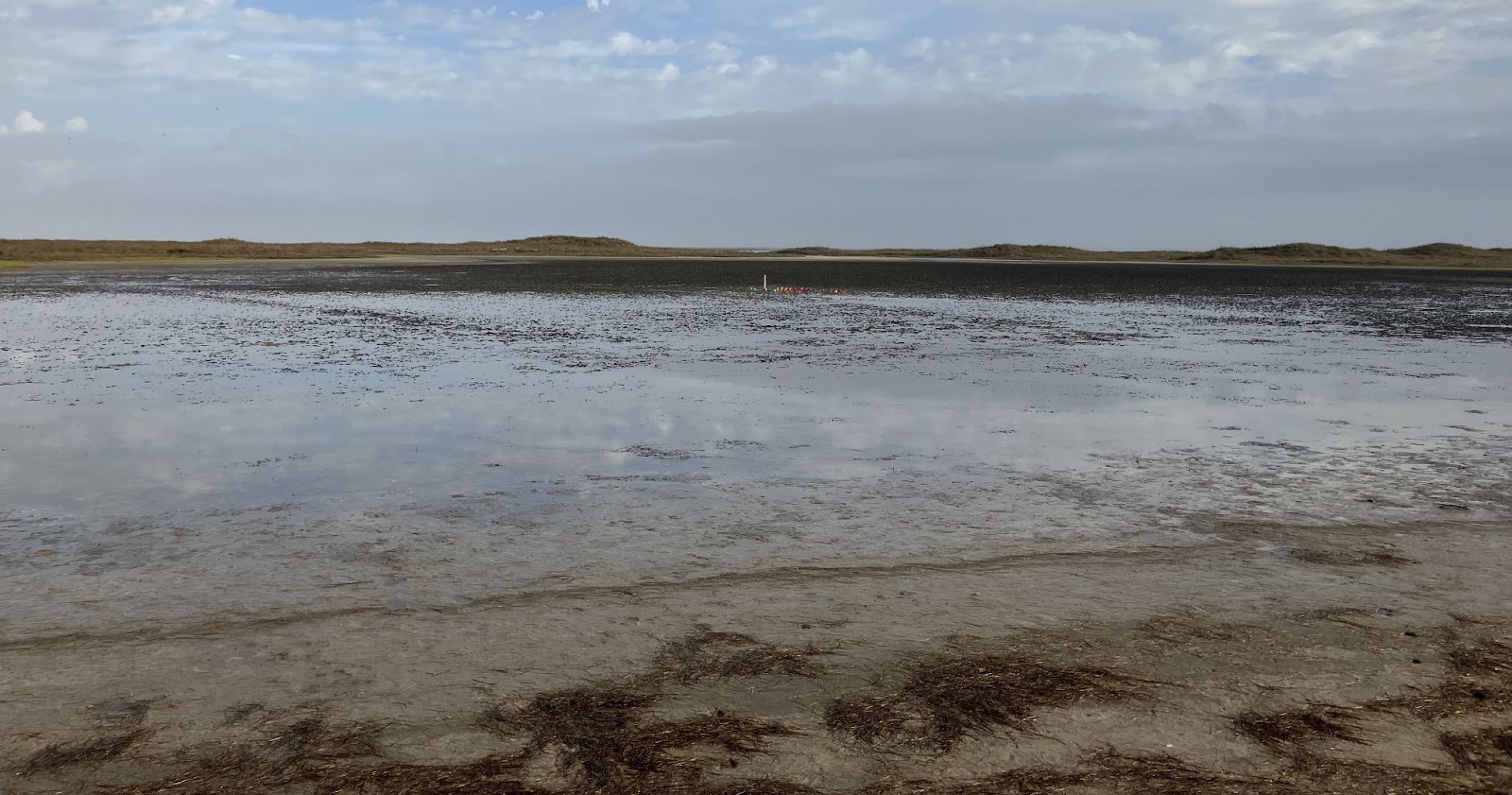Texas Wind-Tidal Flat Restoration Project
The Gulf Coast Ecosystem Restoration Council is funding a pilot project to research different ways to restore wind-tidal flats. Wind tidal flats, a unique coastal ecosystem that is subject to flooding by wind-driven tides, existing only in hyper saline micro tidal landscapes. Laguna Madre, on the west side of Padre Island National Seashore (NPS) is the largest hyper saline bay in the world. The Wind-Tidal Flat Restoration Pilot Project is testing various restoration techniques and assessing the efficacy and cost effectiveness of those techniques. The wind-tidal flat areas at Padre Island National Seashore are significant in that they protect portions of the largest freshwater wetland in Texas, conserve protected species, and provide wintering habitat for millions of migratory birds. However, impacts from previous energy exploration have impaired these important habitats.
This project will lead to the restoration and improved resiliency for 5 acres of Gulf wind-tidal flat habitat and will provide lessons learned that can be applied to other tidal flat sites in need of restoration. Funding through the RESTORE Council's FPL 3b supported a Harte Research Institute at Texas A&M Corpus Christi pilot project to identify effective restoration techniques for this unique and rare habitat along the southern Texas coast which provides valuable ecosystem services to a variety of species, including migratory birds.

Isabel Nykamp, of the Harte Research Institute, discusses the wind-tidal flat project with representatives of Texas, the Council, and the Department of the Interior. (Photo: RESTORE Council)

This study of wind-tidal flat restoration techniques could help inform future efforts to restore this valuable type of coastal ecosystem. (Photo: RESTORE Council)
Learn more about
RESTORE Council Story Map- See What We Do
Modifying your eBlast Subscription(link is external)
Keala J. Hughes
Director of External Affairs & Tribal Relations
(504) 717-7235
keala.hughes@restorethegulf.gov
